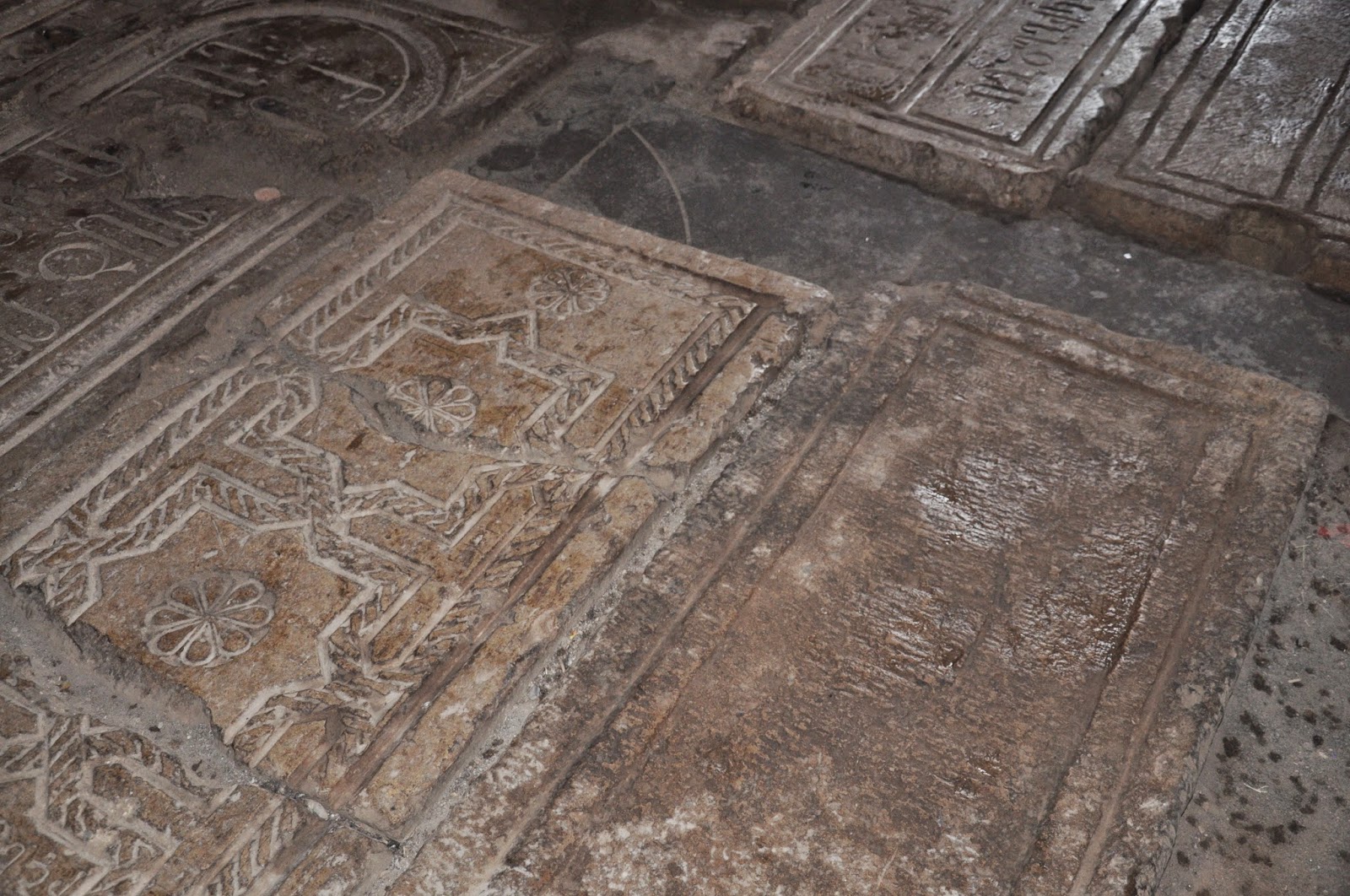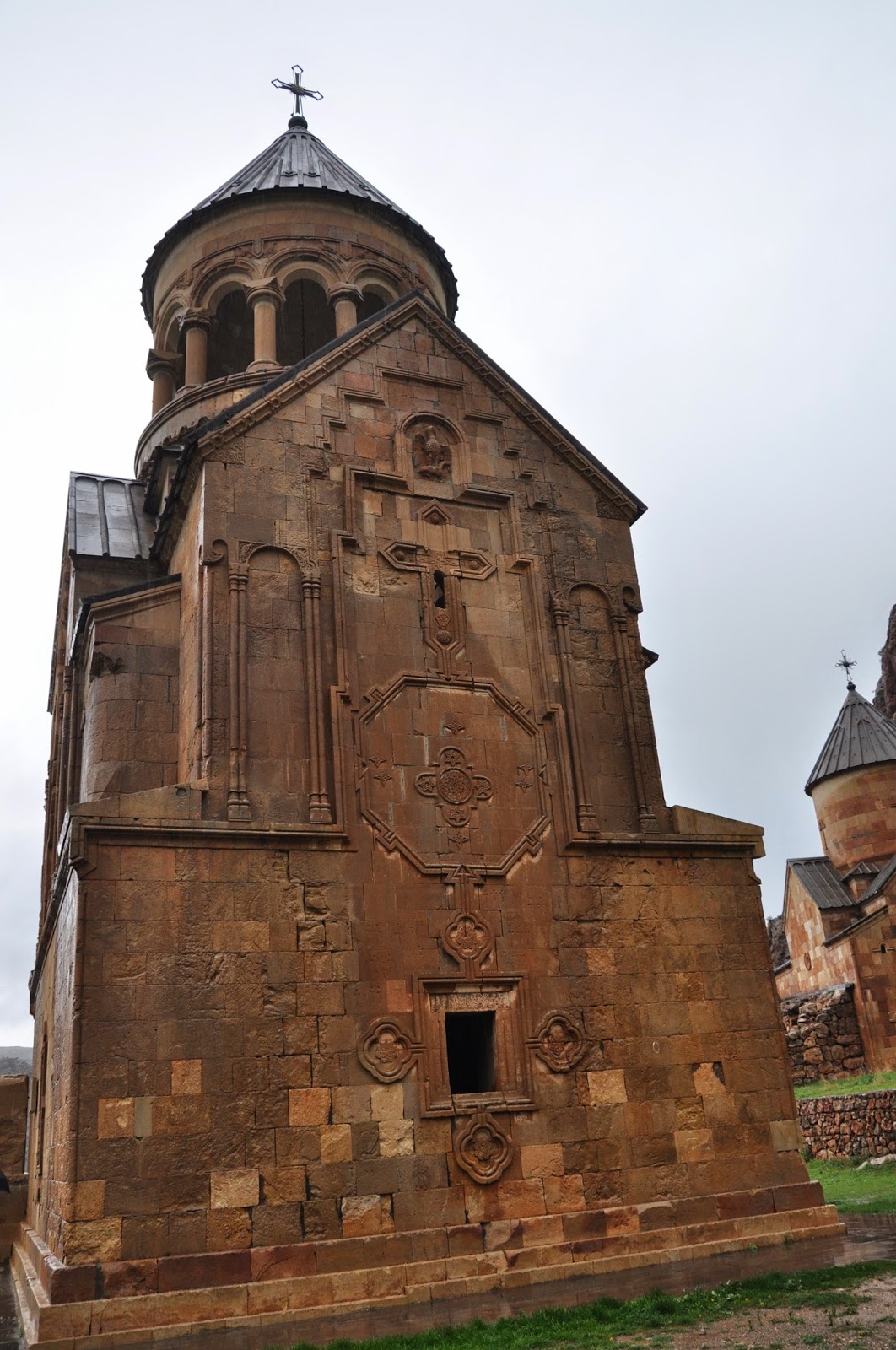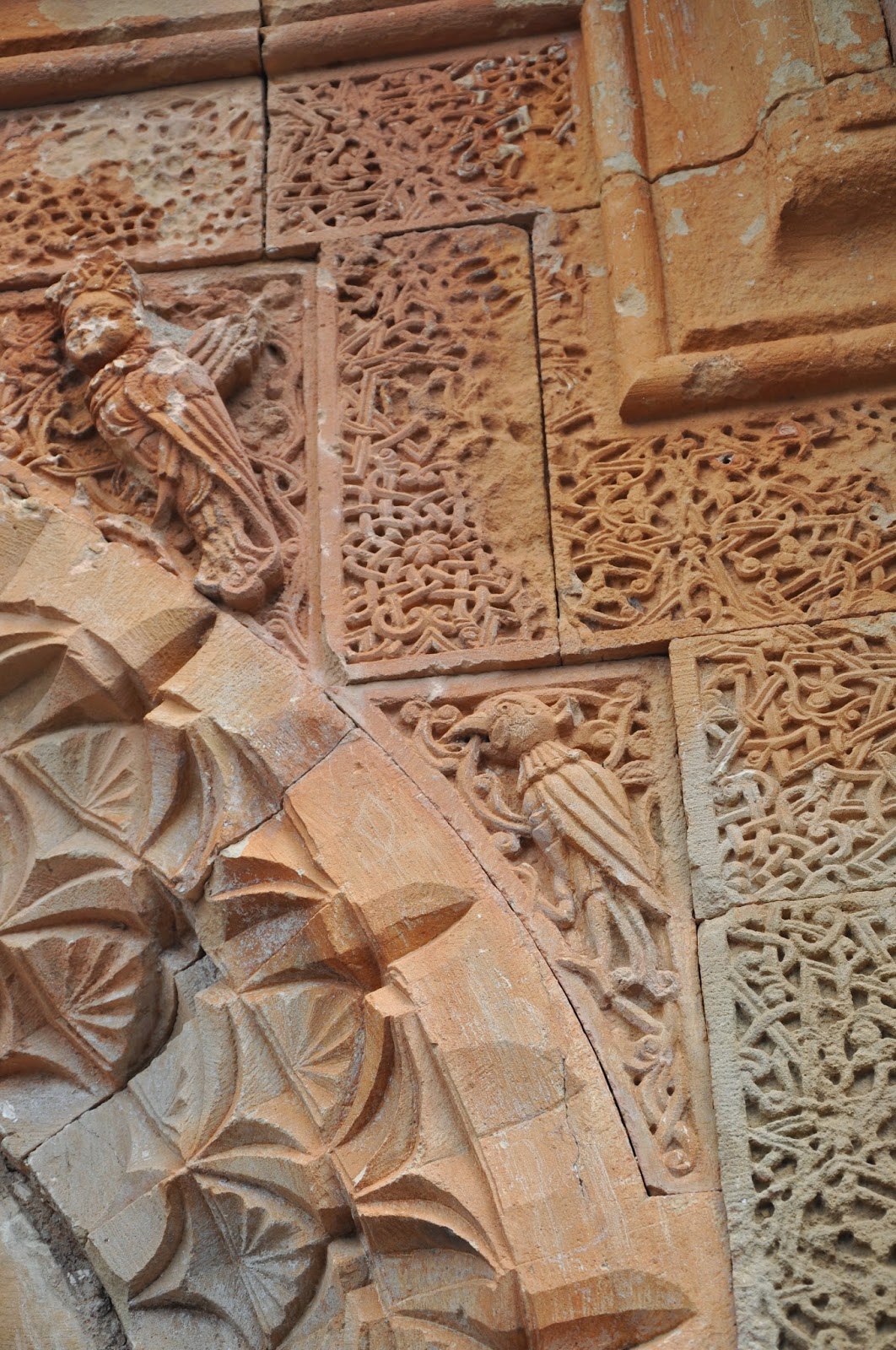I had been looking forward to visiting the Noravank Monastery, once some of the most amazing photographs and postcards I had seen were therewith related and yet by the time we started approaching it it started pouring down with rain, which brought about some disappointment, particularly because it was clear that most outside photographs would have to be taken under an umbrella or some sort of protection.
Located in a gorge made by the Darichai river and surrounded by tall brick-red coloured cliffs, the 13th century Monastery is said to have been the residence of Syunik's bishops and therefore a major religious and cultural centre of Armenia.
The Monastic complex included the church of St. Karapet, St. Grigor chapel and the church of the Holy Mother of God.
The grandest church is the Mother of God church, also called Burtellashen ("Burtel built") in honour of Prince Burtel Orbelian, its financer. Completed in 1339 it is considered as the masterpiece of a talented sculptor and miniaturist (Momik), who designed it and made it his last work. Near the church there is his tomb, small and modestly decorated, which dates from the same year.
Because there were some baptising ceremonies going on in the church oratory I concentrated on the façade structure and its decorations, which I was extremely impressed with. Said to be similar to the tower-like burial structures of the first years of Christianity in Armenia it is a memorial church with its ground-floor being a family burial vault and the first floor a memorial temple connected by outer cantilever stairs.
The door tympanums are decorated with high reliefs showing in the ground storey the Holy Virgin with the Child and Archangels Gabriel and Michael at her sides, in the upper storey a half length representation of Christ and figures of the apostles Peter and Paul.
Between the outer plathand and the arched framing of the openings there are representations of doves and sirens with women's crowned heads, heraldic reliefs said to be commonly used in Armenian Art and in earlier times in works of applied art.





If I was impressed with the former façade I didn't know what to say when I came across the façade of St. Carapet church with a rather unique representation of the bearded God, the Father with his piercing almond shaped eyes blessing the crucifix with his right hand and holding the head of Adam in his left hand (there is a possibility it might be St. John Baptist instead) with a dove (the Holy spirit) above it and another one entangled in his beard
I was equally impressed with the decoration of the semi-circular tympanum representing the Holy Virgin sitting in the Oriental way with the child flanked by two saints, believed to be Prophet Isaiah on the right and St.John Baptist on the left.






Before we walked into the side chapel of St. Grigor, which is said to have been added in 1275 we took advantage of the fact that the rain had stopped and walked out to take some photographs. The chapel contains a rather exquisite carved lion human sort tombstone covering the grave of Elikum, the son of Prince Tarsayich Orbelian. Doves could be seen by the side of the altar.


The presence of a few outstandingly beautiful kachkars should be worth mentioning and so should the surrounding atmosphere with the baptised children and the gathering of families. If we had already noted the role religion still plays in the life of Armenians that day's ceremonial events and peoples' behavioural attitudes did reinforce that fact.



Maybe the rain should be interpreted as a blessing ... the truth is that soon after having stepped onto the church complex's courtyard rain was no longer a problematic issue.























No comments:
Post a Comment